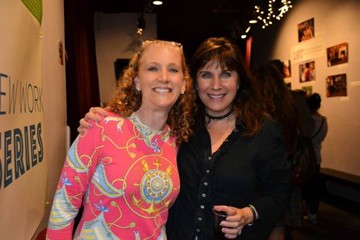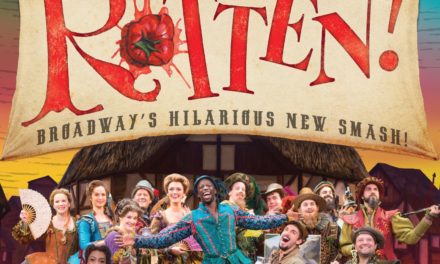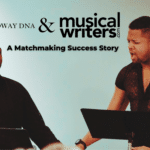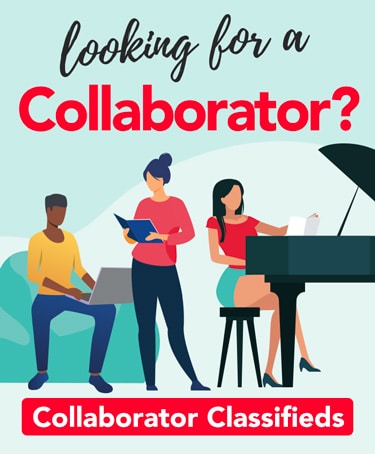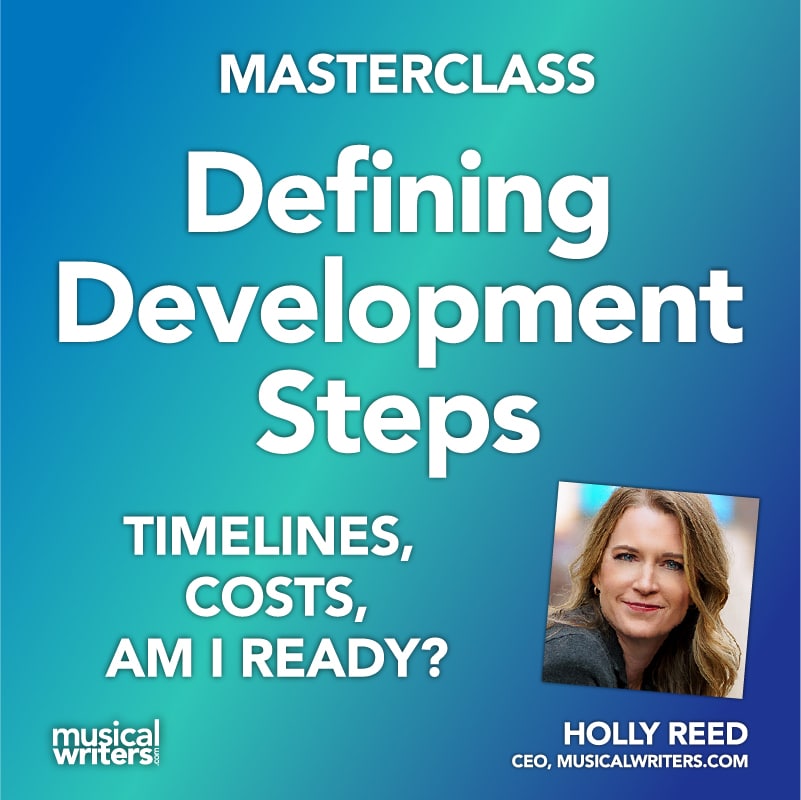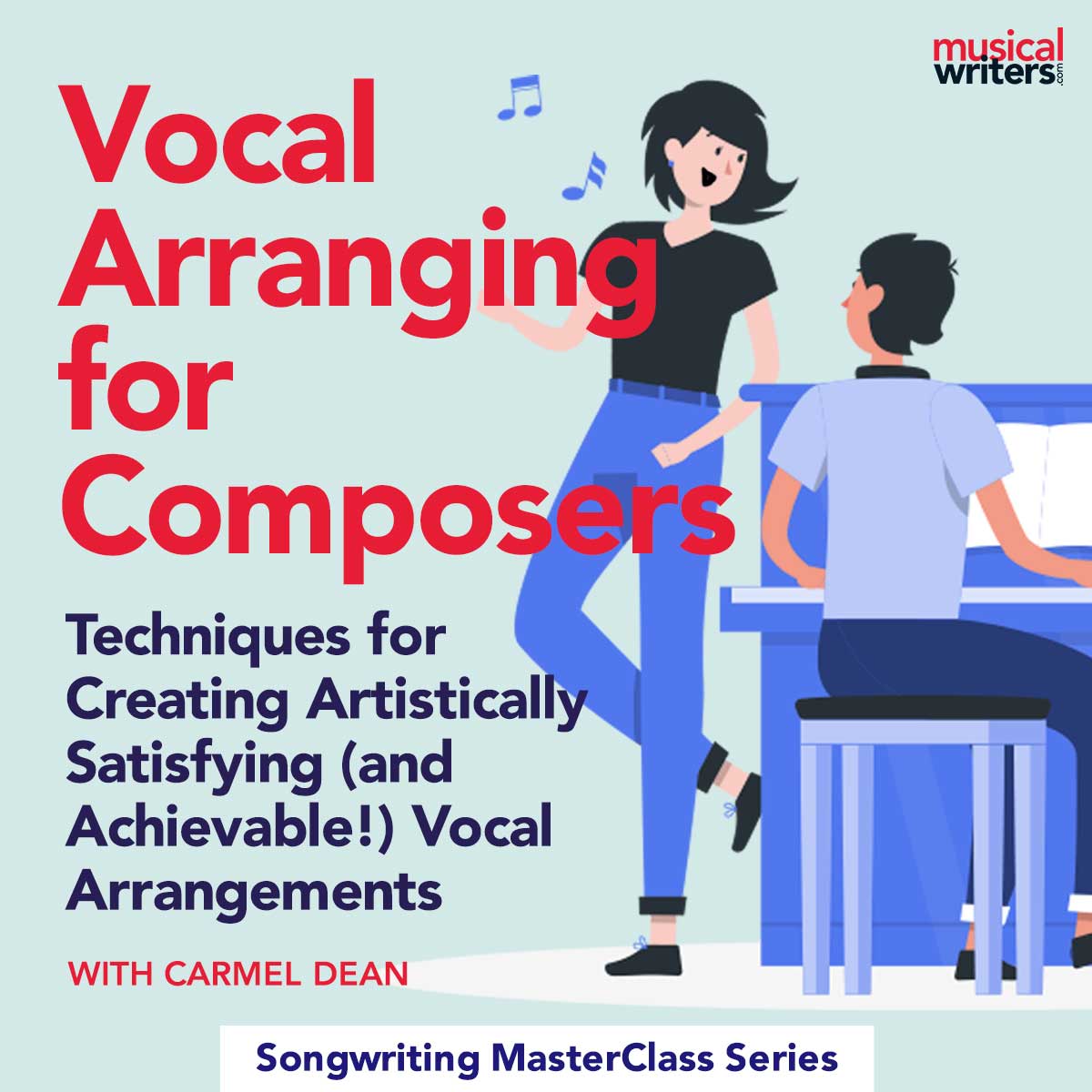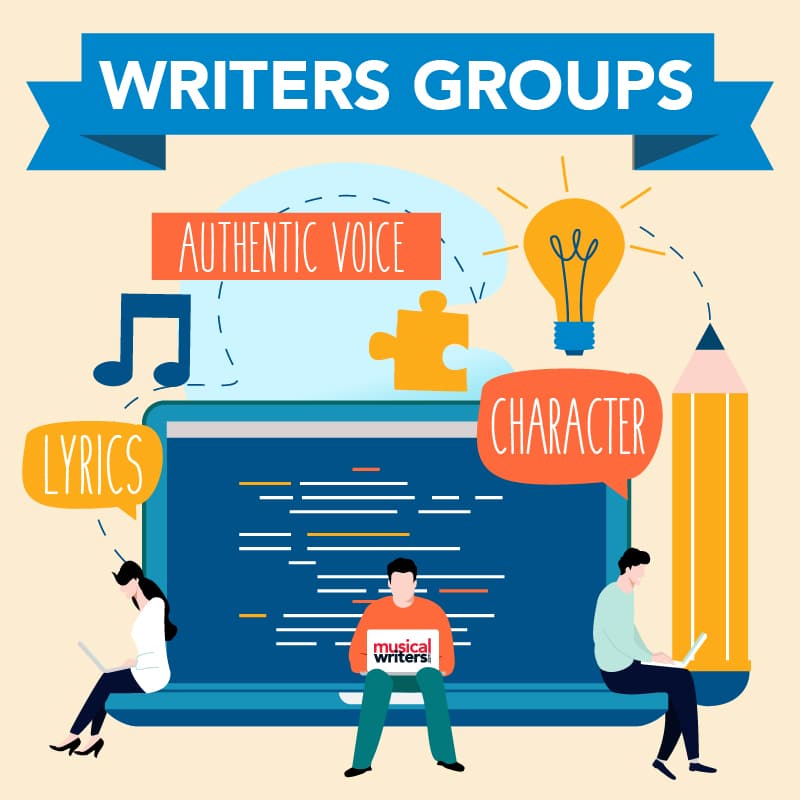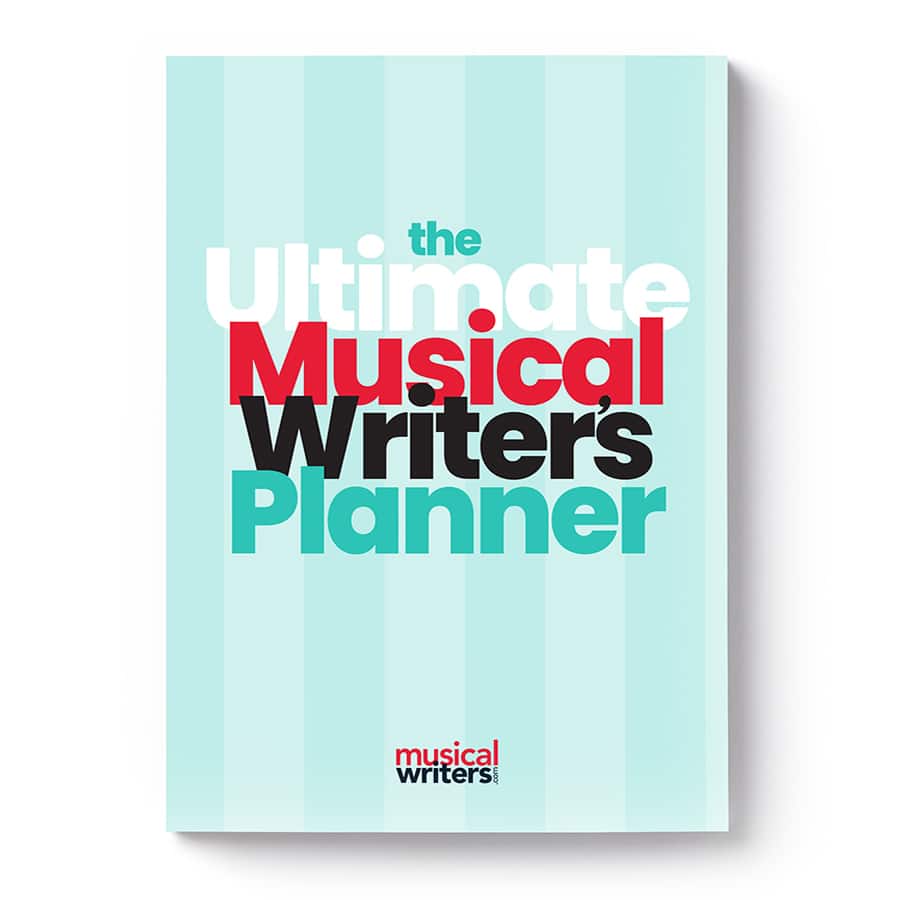This guest blog post by Donald H. Sanborn III explores original ideas for musicals as discussed at the New York Musical Festival/ ASCAP 2016 educational panel discussion.
Takeaways From NYMFs “For the Love of Originality” Panel
As I recently reported for HowlRound, the 2016 New York Musical Festival, in conjunction with ASCAP, featured a panel discussion, For the Love of Originality: How to Invent New Stories in Musical Theater. (And, how to interest producers and audiences.)
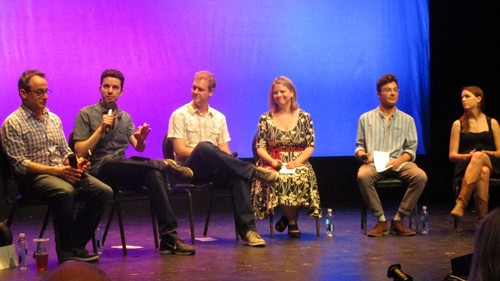
Michael Weiner, Alan Zachary, David Hein, Irene Sankoff, Elliah Heifetz, and Abigail Carney discuss creating an original musical. Photo by Carol de Giere.
The moderators were Alan Zachary and Michael Weiner (zacharyandweiner.com), the team that created the score for First Date.
The panelists were Irene Sankoff and David Hein as well as Elliah Heifetz, and Abigail Carney. Sankoff and Hein are a husband-and-wife writing team who wrote Come From Away that opens on Broadway this season. Their first show, My Mother’s Lesbian Jewish Wiccan Wedding, was based on Hein’s mother’s true story. (Sankoff and Hein)
Carney and Heifetz are the librettist and composer/lyricist of Dust Can’t Kill Me, which was included in the 2016 NYMF.
Definition of an “Original Musical”
“Originality is not the same thing as a musical being original,” Zachary offered. One of Zachary’s favorite musicals, Little Shop of Horrors, is based on a “notoriously terrible!” movie. However the Howard Ashman-Alan Menken musical’s treatment of the story was “highly original.” For the purpose of this discussion, an “original musical” was defined as one not adapted from other media.
Zachary and Weiner discussed the genesis of First Date, which they consider to be in the same category as The Last Five Years. They based First Date on original conversations—lunches in which the writers and a friend discussed their dating lives. (In this respect, the show’s genesis is similar to that of A Chorus Line, which was based on taped workshop sessions with Broadway dancers.) Once Weiner and Zachary had their concept, they had to ask: “How could we dramatize this? Who would the lead characters be?” What events would keep an audience engaged? “There were a million questions, because there was literally no blueprint in front of us for how to create the show,” added Weiner.
Carney remarked, “As much as I love musical theatre, the stories that give me the most inspiration as a writer come from outside of musical theatre. One reason I decided to do an ‘original’ show is that we were excited about doing something musically with stories that are a bit different from what you’re seeing in theatre now.” The inspiration for Dust Can’t Kill Me came from research about the Dust Bowl, as well as novels about the event. “We decided to write about the Dust Bowl because we thought it would be a good way to write about the world today,” Carney continued.
Of Come From Away, Sankoff said:
“We had a friend who asked if we knew what happened in Newfoundland over 9/11. As Canadians, we knew that planes had been grounded there. David and I had been in New York over 9/11, so that’s what our experience, our focus was at the time. This friend, Michael Rubinoff, was starting the Canadian Musical Theatre Project.”
He told us that he thought what happened in Gander would ‘make a really good musical. Other composing teams had turned him down. We said ‘yes,’ because living at International House in New York during the days following 9/11 we felt the spirit of the story was similar to what we had experienced, living in a residence with students from 110 different countries and leaning on each other for support, and using music and storytelling to soothe each other as we waited for news of our friends and family downtown. We applied for a grant from the Canadian Government to interview people, and it happened to be perfect timing, because this was the tenth anniversary; a lot of commemoration and ceremonies were being planned—people who had been stranded were choosing to visit the people who had taken them in.”
No Business Like Originality
A practical advantage to original stories is that rights need not be obtained from another source—a process that can be costly and time-consuming. However, the development process with directors can be thorny in terms of assigning credit for a musical’s content (as happened with South Pacific). What did each collaborator contribute? Then, how to assign credits and royalties? It is best to establish in writing the contribution of the director (who often serves as a dramaturg) as a work for hire.
The panelists discussed the networking strategies they have employed to interest the industry in their musicals. One team had a college dean see their show, and subsequently submitted it to NAMT and Goodspeed. Another team hosted readings in their homes, then they submitted their show to the Fringe Festival. Weiner remembered writing letters “to every producer” about his work.
Challenges of Original Musicals
During the Q&A segment, I asked all of the panelists to name the greatest challenges they faced throughout the entire process of writing and production. They replied that during the writing, it could be difficult to invent stories with (workable) arcs. The lack of a blueprint can be difficult, but there is the freedom of a blank slate. The key is to force oneself to make creative choices and finish a draft.
For tips on story structure, read Story Design: The 7 Plot Points.
From a production standpoint, the panelists noted the difficulty of getting performances. However, there are development opportunities such as NYMF’s Next Link Project.
Take-Aways
Writing a show with an original story can be risky, but it also has advantages. The writer starts with a blank page, unencumbered with expectations based on an audience’s previous experience with a work. Further, live theatre can support stories that would not be as effective in other media. An example of this is The Drowsy Chaperone. The plot concerns a musical theatre aficionado who listens to a rare cast recording, and imagines the characters coming to life in his apartment.
A member of the audience asked how, in the process of pitching a show with an original story, writers can protect their ideas from plagiarism. The answer was that the process leaves an extensive paper trail, and stories unique to you are difficult to duplicate (unless based on an event such as 9/11, as is Come From Away).
The central point I took away from the discussion was this: If you want to create a musical whose story is original, “Write what you know.” Or, write what you can learn by interviewing others. Festivals of new musicals such as NYMF or Fringe create an environment where such works can be fostered and developed.
This piece, “For the Love of Originality: NYMF’s Discussion on Inventing New Stories in Musical Theatre” by Donald Sanborn III was originally published on HowlRound, a knowledge commons by and for the theatre community, on December 12, 2016.
Donald H. Sanborn III writes about musical theatre for HowlRound, and he is co-editing a biography of Frederick Loewe. As a composer and lyricist, he has written a full-length musical, Robin Hood: How Legends are Made, and he contributed music for two songs from Raw Impressions’ contemporary musical of La Ronde. DonaldSanbornIII


